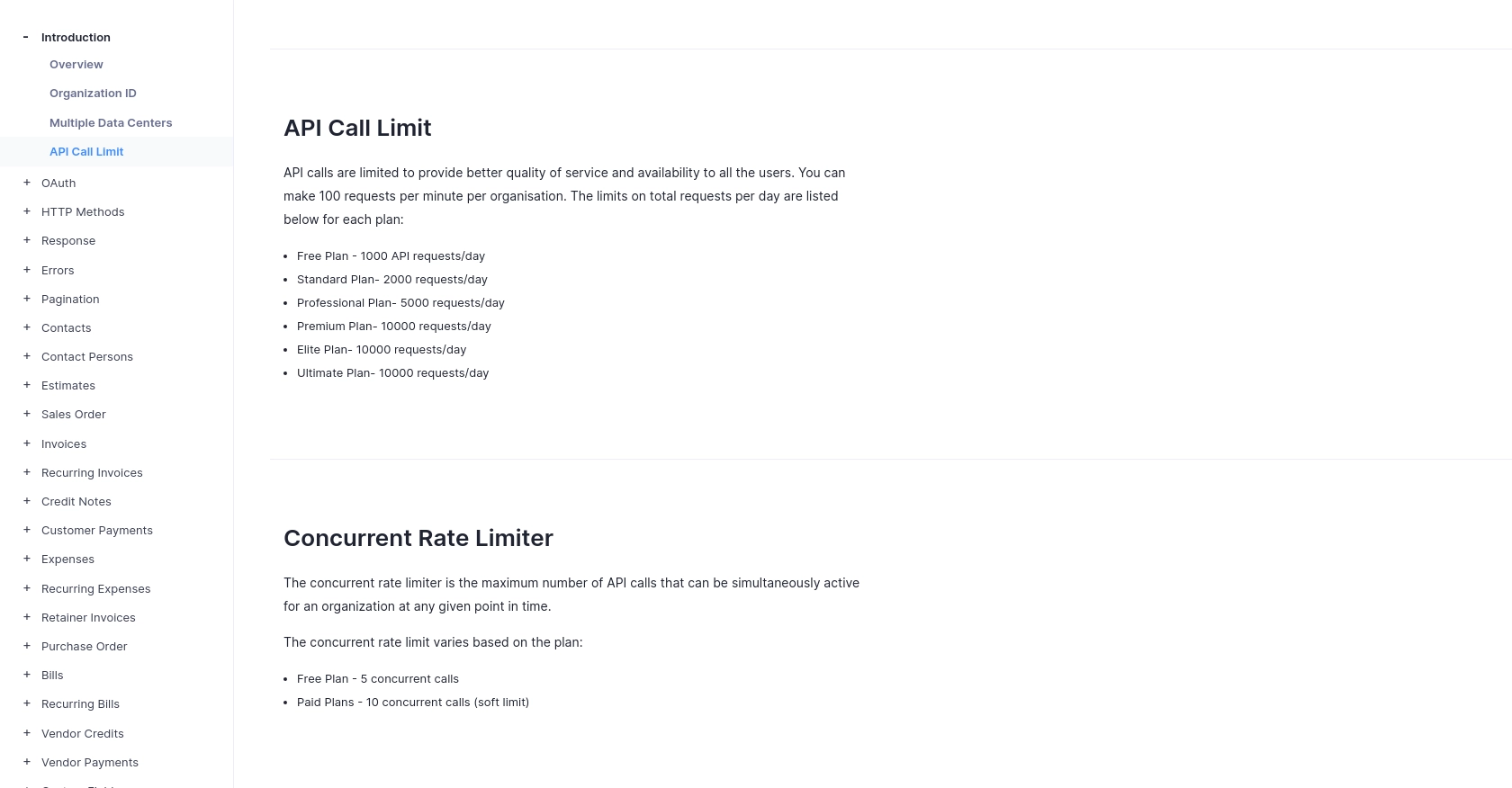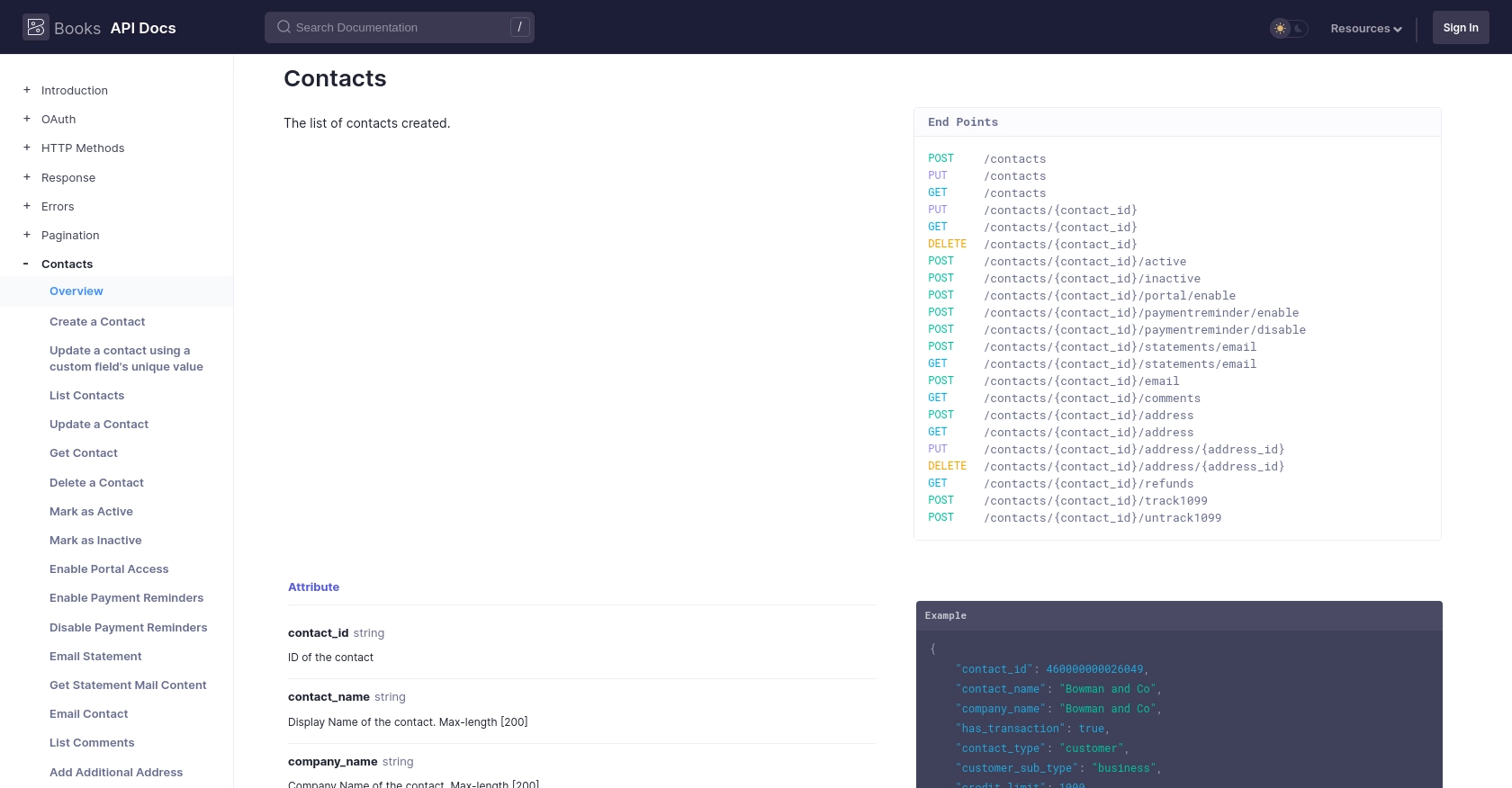Using the Zoho Books API to Get Customers in Python

Introduction to Zoho Books API
Zoho Books is a comprehensive online accounting software designed to manage your finances, automate business workflows, and help you work collectively across departments. It offers a wide range of features including invoicing, expense tracking, and inventory management, making it a popular choice for businesses of all sizes.
Integrating with the Zoho Books API allows developers to access and manage financial data programmatically, enhancing the efficiency of business operations. For example, a developer might use the Zoho Books API to retrieve customer information, enabling seamless integration with CRM systems or custom applications for better customer relationship management.
This article will guide you through using Python to interact with the Zoho Books API, specifically focusing on retrieving customer data. By the end of this tutorial, you will be able to efficiently access and manage customer information within Zoho Books using Python.
Setting Up Your Zoho Books Test/Sandbox Account
Before you can start interacting with the Zoho Books API, you'll need to set up a test or sandbox account. This allows you to safely experiment with API calls without affecting your live data.
Creating a Zoho Books Account
If you don't already have a Zoho Books account, you can sign up for a free trial on the Zoho Books website. This trial will give you access to all the features needed for testing API interactions.
- Visit the Zoho Books signup page.
- Fill in the required details and follow the on-screen instructions to create your account.
- Once your account is set up, log in to access the Zoho Books dashboard.
Registering a New Client for OAuth Authentication
Zoho Books uses OAuth 2.0 for secure API authentication. To use the API, you'll need to register your application and obtain OAuth credentials.
- Go to the Zoho Developer Console.
- Click on "Add Client ID" to register a new application.
- Provide the necessary details, such as the client name and redirect URI, and submit the form.
- After registration, you'll receive a Client ID and Client Secret. Keep these credentials secure as they are essential for API access.
Generating OAuth Tokens
With your Client ID and Client Secret, you can now generate the OAuth tokens required for API requests.
- Redirect users to the following authorization URL to obtain a grant token:
- Upon user consent, Zoho will redirect to your specified URI with a code parameter.
- Exchange this code for an access token by making a POST request:
- Store the access token securely for use in API requests. Note that access tokens expire, and you may need to use a refresh token to obtain a new one.
https://accounts.zoho.com/oauth/v2/auth?scope=ZohoBooks.contacts.READ&client_id=YOUR_CLIENT_ID&response_type=code&redirect_uri=YOUR_REDIRECT_URIhttps://accounts.zoho.com/oauth/v2/token?code=YOUR_CODE&client_id=YOUR_CLIENT_ID&client_secret=YOUR_CLIENT_SECRET&redirect_uri=YOUR_REDIRECT_URI&grant_type=authorization_codeWith your Zoho Books account and OAuth setup complete, you're ready to start making API calls to retrieve customer data using Python.

sbb-itb-96038d7
Making API Calls to Retrieve Customers from Zoho Books Using Python
To interact with the Zoho Books API and retrieve customer data, you'll need to use Python. This section will guide you through setting up your environment and making API calls to get customer information.
Setting Up Your Python Environment for Zoho Books API Integration
Before making API calls, ensure you have the necessary tools and libraries installed on your machine.
- Python 3.11.1 or later
- The Python package installer
pip
Install the requests library to handle HTTP requests:
pip install requestsWriting Python Code to Get Customers from Zoho Books
Now that your environment is ready, you can write a Python script to retrieve customer data from Zoho Books.
import requests
# Define the API endpoint and headers
endpoint = "https://www.zohoapis.com/books/v3/contacts"
headers = {
"Authorization": "Zoho-oauthtoken YOUR_ACCESS_TOKEN",
"Content-Type": "application/json"
}
# Set the parameters to filter by contact type 'customer'
params = {
"organization_id": "YOUR_ORGANIZATION_ID",
"contact_type": "customer"
}
# Make a GET request to the API
response = requests.get(endpoint, headers=headers, params=params)
# Check if the request was successful
if response.status_code == 200:
data = response.json()
for customer in data.get("contacts", []):
print(f"Customer Name: {customer['contact_name']}")
else:
print(f"Failed to retrieve customers: {response.status_code} - {response.text}")
Replace YOUR_ACCESS_TOKEN and YOUR_ORGANIZATION_ID with your actual access token and organization ID.
Verifying API Call Success and Handling Errors
After running the script, you should see a list of customer names printed to the console. If the request fails, the script will output the error code and message. Common error codes include:
- 400: Bad request
- 401: Unauthorized (Invalid AuthToken)
- 404: URL Not Found
- 429: Rate Limit Exceeded
- 500: Internal Error
For more details on error codes, refer to the Zoho Books API documentation.
Handling Zoho Books API Rate Limits
Zoho Books imposes rate limits on API requests to ensure quality of service. The limits are:
- 100 requests per minute per organization
- 1000 requests per day for the Free Plan
For more information, see the API call limit documentation.

Conclusion and Best Practices for Using Zoho Books API with Python
Integrating Zoho Books API with Python can significantly enhance your ability to manage customer data efficiently. By following the steps outlined in this guide, you can seamlessly retrieve customer information and integrate it with other systems, improving your business operations.
Best Practices for Secure and Efficient Zoho Books API Integration
- Securely Store Credentials: Always store your OAuth credentials, such as Client ID, Client Secret, and access tokens, securely. Use environment variables or secure vaults to prevent unauthorized access.
- Handle Rate Limits: Be mindful of Zoho Books' API rate limits. Implement logic to handle rate limit errors (HTTP 429) by pausing requests and retrying after a delay. For more details, refer to the API call limit documentation.
- Implement Error Handling: Use robust error handling to manage API responses. Check for common error codes and implement retry logic or user notifications as needed. Refer to the Zoho Books API error documentation for guidance.
- Optimize Data Handling: When retrieving large datasets, consider using pagination to manage data efficiently. Adjust the
per_pageparameter to suit your needs, as detailed in the pagination documentation.
Enhance Your Integration Strategy with Endgrate
While integrating with Zoho Books API using Python is powerful, managing multiple integrations can be complex and time-consuming. Endgrate simplifies this process by providing a unified API endpoint that connects to various platforms, including Zoho Books. By leveraging Endgrate, you can:
- Save time and resources by outsourcing integrations, allowing you to focus on your core product.
- Build once for each use case instead of multiple times for different integrations.
- Offer an intuitive integration experience for your customers.
Explore how Endgrate can streamline your integration efforts by visiting Endgrate's website.
Read More
- https://endgrate.com/provider/zohobooks
- https://www.zoho.com/books/api/v3/introduction/#api-call-limit
- https://www.zoho.com/books/api/v3/oauth/#overview
- https://www.zoho.com/books/api/v3/errors/#overview
- https://www.zoho.com/books/api/v3/pagination/#overview
- https://www.zoho.com/books/api/v3/contacts/#overview
Ready to get started?

